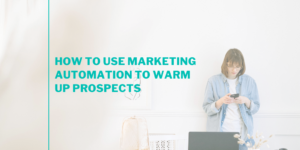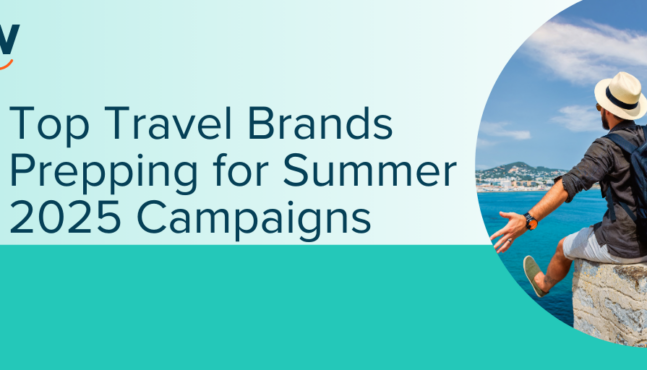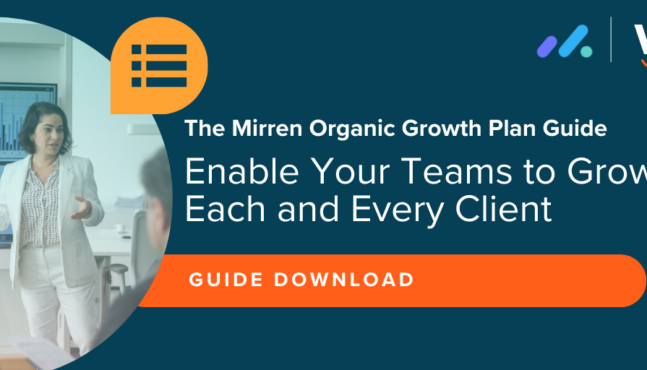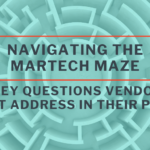
How to Use Marketing Automation to Warm Up Prospects
If marketing automation isn’t part of your engagement strategy in 2024, you’re missing out on one of the most effective ways to connect with prospects — and you’re not alone. Surprisingly, email marketing is only used by 31% of marketers, and even fewer are leveraging the advanced features of their platforms. The potential to connect and engage with prospects is enormous, but many are still not tapping into it.
First, let’s think about why a prospect shared their email address in the first place. Assuming your lead capture process is up and running, you’ve likely gated some valuable content behind a lead capture form on your site, and now you’ve got a prospect’s email address to work with. This is where marketing automation comes into play. By setting up a workflow that consistently delivers content focused on what initially caught their interest, you can keep them engaged, draw them back to your site, and guide them through your sales funnel.
Creating a workflow that triggers follow-ups based on user behavior gives your prospects more personalized interactions, which can lead to higher engagement with your brand. Every email address on your list has a “honeymoon period.” It’s tempting to send a flurry of messages while they’re still receptive, but delivering the journey they expected when they signed up is crucial. If you don’t, you risk losing them. For example, if a prospect downloaded your ebook on sales strategies, follow up with content that continues that conversation. Include links to other related topics and use the clicks on those links to build a profile of your prospect’s interests.
Nurturing and personalization
Not every email address in your CRM is going to convert. How many times have you entered your email to access specific content, even if you had no intention of buying? Many of us do this, especially when researching (sorry, marketers).
The goal is to nurture your audience, guiding them from a lead to a marketing-qualified lead (MQL), to a sales-qualified lead (SQL), and finally to a customer. However, not all leads follow the same path to conversion, so understanding your prospect’s needs as they explore solutions is critical to keeping them in your funnel. Delivering the right content at the right time shows you understand their challenges.
Personalizing the buyer’s journey helps remove friction points. Each click should answer a question and provide more information that guides them to their next question. This nurtures your prospect from recognizing they have a problem to solve to realizing that your brand offers the best solution.
Consumers today are more informed and discerning than ever before. A recent report showed that compared to a decade ago:
- 70% of consumers believe they make more informed purchasing decisions.
- 66% consider more brands in their decision-making process
- 50% rely on word of mouth about other people’s experiences.
Most prospects already have a good idea of what they want (or think they do) when they visit your website or talk to a sales rep. So, it’s essential to lead them to the next thing they need to know, relying on personalization that acknowledges the person behind the email.
The human element
Behind every email address is a real, living person with their own unique experiences. Your audience is human, which impacts how they perceive your brand at any moment. Think of your prospect’s emotions as data points on a chart. The more data points you have, the clearer your understanding of their journey. Building a profile of the people behind each email address — often called progressive profiling — lets you deliver hyper-relevant, timely, and valuable content to your prospects. The ultimate goal is to achieve a one-to-one customer experience. Gathering customer intelligence and integrating it into your messaging will help you achieve that goal.
Behavioral triggers
There are different kinds of email marketing:
- Drip campaigns are a series of emails triggered at the beginning of a campaign and sent on a set schedule. They’re great for keeping your brand top of mind with prospects who have yet to convert to sales-qualified leads.
- Behavior-triggered email cadences are more complex and should be designed like a flowchart. They require some understanding of logic, but if you’ve ever read a choose-your-own-adventure book, you’re already familiar with the concept.
Behavior triggers allow you to create campaigns you can “set and forget.” As long as you periodically update the content and emails, the campaign can run indefinitely, converting prospects into customers. These triggers are top performers for many teams. They use real-time behavior to decide when to shift from sharing content to asking for a meeting. Timing is everything, and when you get it right, those meetings start rolling in.
But, don’t forget your existing customers
Think about any mobile phone provider. They’re always running campaigns offering new phones and service plans at unbeatable prices—if you’re a new customer. But what about the loyal customers who’ve been with them for years? They often get overlooked. Why stay with a company that treats you like that?
Many organizations focus on acquiring new customers while neglecting the ones they already have. However, retaining existing customers is cheaper and easier than finding new ones. So much time and effort go into campaigns to attract new customers that it’s jarring when communication suddenly stops after the sale. And trust me, the customer notices. At worst, this can lead to customer loss, forcing your organization to focus on acquisitions and creating a self-fulfilling prophecy. At best, it sends the message that your interest in the customer only extends as far as making the sale.
If that’s the case, don’t be surprised when your customers start looking at your competitors when it’s time to renew.





